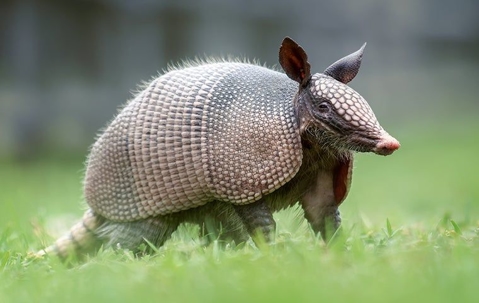Armadillos digging in your Houston, Dallas/Fort Worth, TX and surrounding areas yard can be discouraged by applying Beneficial Nematodes. Beneficial Nematodes are microscopic worms that devour grubs and other soil-dwelling pests such as fleas, fire ants, and termites. No grubs = no armadillos digging in your yard.
911 Wildlife can assist you with evicting an uninvited armadillo that has burrowed or nested under your structure. We do not trap and relocate them; however, we provide fast, affordable solutions to secure your property.
The armadillo is an armored mammal related to anteaters and sloths. The nine-banded armadillo is found in Texas, Oklahoma, Louisiana, Arkansas, Tennessee, Mississippi, and Florida, as well as South and Central America.
The layer of horn (hard material derived from hair) and bony plates that protect the animal against thorny plants is formed by the ossification of the greater part of the skin. The shoulders and rump are each covered by a single large shield, and the middle of the body is covered by transverse bands that are moveable and articulated. The three-banded armadillo found in South America can roll itself into a tight ball. The North American nine-banded armadillo tends to jump straight in the air when surprised, and consequently often collides with the undercarriage or fenders of passing vehicles.
The nine-banded armadillo exhibits delayed implantation, so the young are not typically born for eight months after mating. They are the only mammal that always gives birth to identical quadruplets.
Armadillos are often used in the study of leprosy, since they are among the few known non-human animal species that can contract the disease systemically. They are particularly susceptible due to their unusually low body temperature, which is hospitable to the leprosy bacterium. Humans can acquire a leprosy infection from armadillos by handling them or consuming armadillo meat. Prior to the arrival of Europeans in the late 15th century, leprosy was unknown in the New World. Given that armadillos are native to the New World, at some point they acquired the disease from humans.
Despite short legs, the armadillo moves relatively quickly, and with its strong feet and thick claws it can burrow with considerable speed. It is generally nocturnal and feeds on insects and their larvae, especially grubs. It has poor eyesight, but an excellent sense of smell which it uses to detect underground food.
Complete the form below to schedule your inspection today

